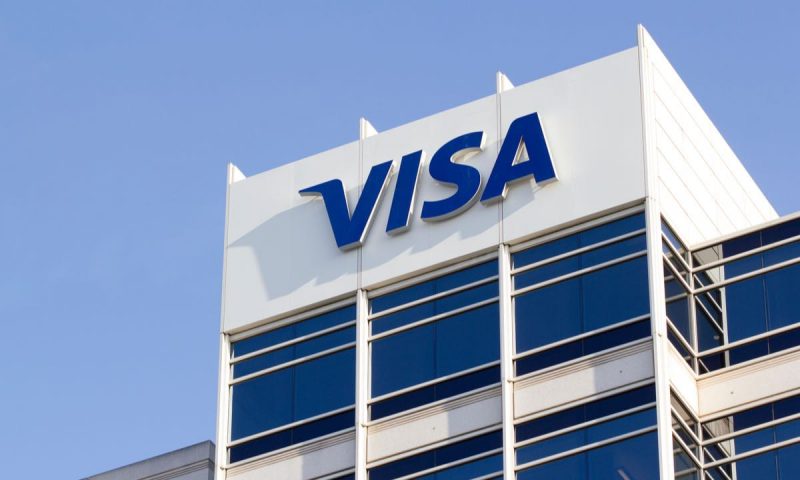Towards the end of January, Watcher Guru reported that Visa may integrate blockchain-powered solutions into its services to bolster the next generation of payments. The credit card giant’s executive Alfred F. Kelly revealed that the company believes that stablecoins and CBDCs could play a meaningful role in the payments division. He also briefly unveiled that Visa has “a number of initiatives” underway.
Read More: Visa Has “A Number Of” CBDC, Stablecoin Initiatives Underway: CEO
According to reports, Visa is already testing how to accept payments and payout on Ethereum via stablecoin USDC. Cuy Sheffield, Vice President, Head of Crypto at Visa highlighted that the transactions were “large value settlement payments.”
He reportedly added,
“That’s been one of the areas where we want to build muscle memory. The same way that we can convert between dollars in euros on a cross-border transaction, we should be able to convert between digital tokenized dollars and traditional dollars.”
Also Read: Visa Is Exploring Options To Allow Auto Payments Via Ethereum Wallets
Additionally, a team of researchers and engineers across Visa has been working to evaluate the foundations of various blockchains. The focus areas include security, scalability, interoperability, privacy, and use cases of different protocols
In fact, the company started exploring options to allow auto payments via Ethereum wallets a couple of months back. In the latter half of December 2022, the credit card giant released a proposal outlining how users could set up automatic payments. It allowed users to eliminate banks and other centralized entities from the equation.
Why stablecoin payments?
At the moment, Visa uses “SWIFT” for settlements. The said system reportedly facilitates trillions of dollars of cross-border payments between 11,000 financial institutions in more than 200 countries. Elaborating on the drawbacks and explaining why Visa has started treading on the stablecoin payment route, Sheffield said,
“We set all over Swift, so we can’t move money as frequently as we’d like because there are a number of limitations that exist in those networks. And so, we’ve been experimenting, we publicly announced. We’ve been testing how to actually accept settlement payments [with stablecoins].”
Visa’s recent proposal highlighted that by using Ethereum crypto wallets, users can “pull” funds without the need to manually sign off every transaction. So, this means, with support from Visa, users can schedule auto-payments sent from self-custodial crypto wallets.
Such capability is not yet possible on the Ethereum mainnet, but would be fostered by a proposal called “Account Abstraction.” As a result, it would allow Ethereum user accounts to work like smart contracts and feature pre-scheduled execution functions.
A recent tweet from StarkNet Ecosystem re-asserted that Sheffield and Visa have fallen into the “rabbit hole” of the said proposal and claimed it to be “huge”.
Also Read: Will Tether, Stablecoin Settlements Surpass Visa, Mastercard In 2023?
The domino effect of the collapse of FTX was not welcoming. As a cautionary measure, TradeFi institutions were hesitant about integrating crypto and blockchain technology. According to stalwarts from the space, the latest Visa announcement is a welcoming sign and points that mainstream adoption is now back on track.
Opining on the latest development, Jane Ma, the Co-Founder and Co-Project lead of StarkNet based money market protocol zkLend told Watcher Guru,
“Visa introducing stable coin payments is an example of CeDeFi and is part of a two-pronged system. CeDeFi fuels the financial growth of crypto and bridges the industry with traditional markets while acting as a gateway to DeFi.”
Also Read: Here’s How Much Visa Earned Through Crypto Payments in its Fiscal Q1 2022





